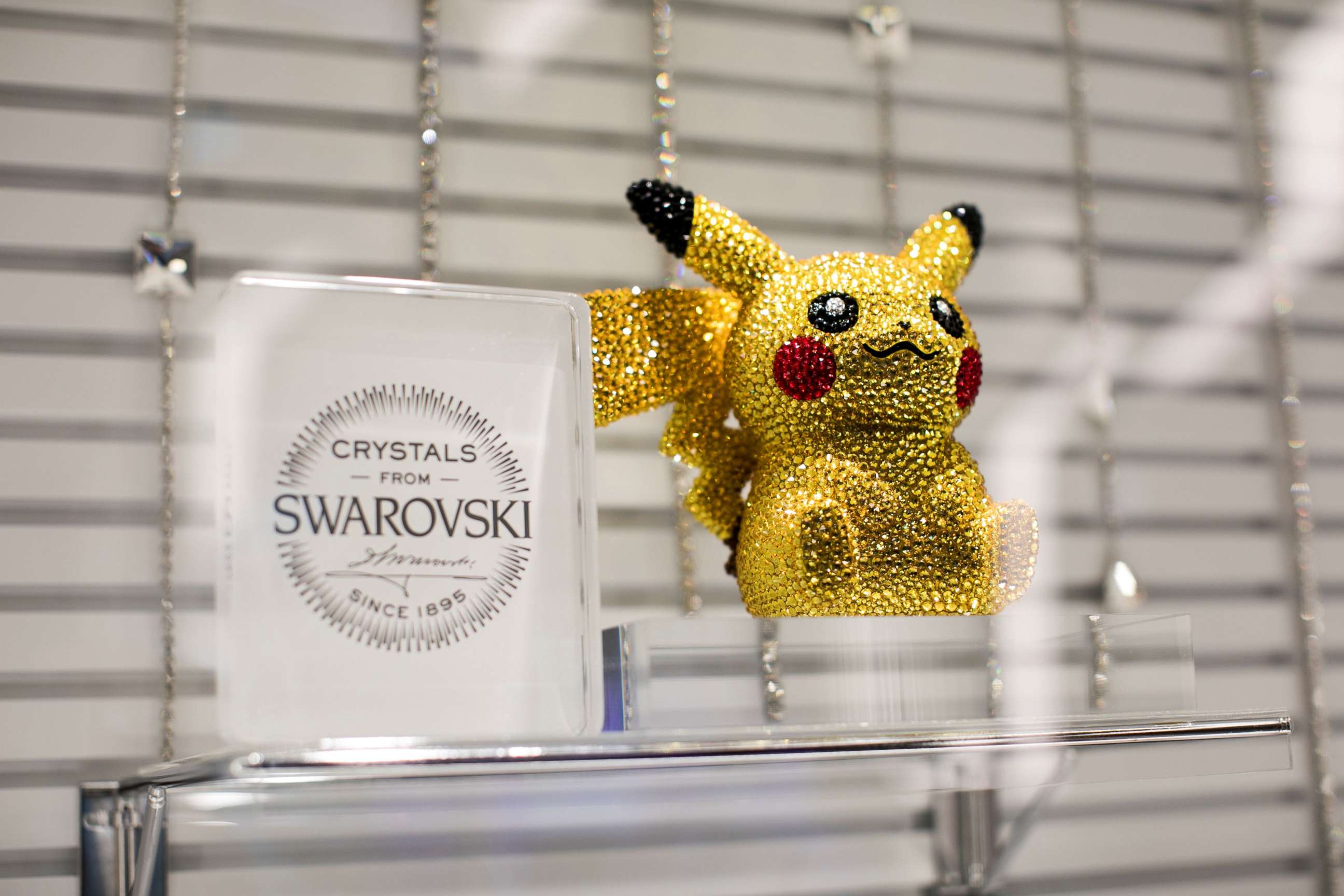Why one 90s toy phenomenon is making a comeback
The 25th anniversary of the $90 billion franchise is coming next year.
Since the first introduction of Pokémon to American audiences in 1997, it has collected the hearts of several generations. When the iconic show first aired in the U.S., kids were immediately glued to their TV sets and mesmerized by the adventures of Ash and Pikachu, and when the Pokémon Trading Card Game launched in the late 90s, Pokémon cards invaded classrooms across the country and many schools fought the craze by banning them in order to keep students focused on their schoolwork. Then in 2016, Pokémon Go became a global phenomenon as people ventured out in the real world to become Pokémon masters, and with the 25th anniversary of the $90 billion franchise approaching next year, it's taking the world by storm again.
Logic, the multi-platinum artist made headlines in early October when he was the winner of a rare 1999 1st edition Charizard card that was sold at auction for more than $220,000, and more recently, over 9.5 million people watched YouTube star Logan Paul’s live stream video that featured him opening a sealed 1999 Pokémon 1st edition Base Set Booster Box, which he purchased for more than $200,000.
On the ABC News Perspective Podcast, Lee Steinfeld, who is known as Leonhart on YouTube and has over 1 million subscribers that watch him open new and vintage Pokémon card packs, told ABC News there are two reasons why celebrities like Justin Bieber and others are driving the recent trend.
“It’s an absolute combo of people around my age, I’m 33. They are getting that nostalgia fix by finding their old collections, then they're seeing that, ‘hey, they're valuable.’ Anything with Charizard is usually the most popular; the most valuable as well.”
Soon after Logic won his prized card, he revealed on Instagram that he missed out on buying Pokémon cards during his childhood because his family could not afford them, which made the triple-digit purchase meaningful as he’s now able to live that experience he’s always wanted. Although not every Pokémon card is selling for the same price of a Lamborghini, Steinfeld revealed that Charizard’s dragon-like flair is one part of why it’s known as the crown jewel of Pokémon cards.

“Charizard is one of the absolute rarest cards -- pulls wise. Which means you open up a pack and there are several cards in the pack; you’re hoping to get that holographic Charizard card because that’s the most popular and very difficult [card] to pull from a pack. So, fast-forward to today, how many of these packs are out in the wild right now? How many of these packs are really even in a random storage unit somewhere, maybe? We don’t know. There’s not a lot of them left, but you want to pull that Charizard card because of the nostalgia, because of how difficult it is to pull it.”
When the coronavirus pandemic first hit back in March and forced people to stay home, Jeff Woolf, owner of Iconic Auctions, the auction site that sold the $220,000 card to Logic, shared to Perspective that he believed the COVID-19 outbreak played a role in people revisiting their childhood and accelerating the recent hype around Pokémon, but that the market for these cards have been years in the making.
“I see a Pokémon card and it was past my generation. I see the investment potential, but the people that get it, the people that will drive the market for it are the people that first see it and there’s a sense of nostalgia. It takes them back to a time when they were younger or puts them in a happy place. It’s the same type of identification that people have to the sports cards and now we’ve seen routinely now, sports cards just this year alone, several have sold for millions of dollars and Pokémon is probably on its way to that.”
It’s no secret that sports cards have traditionally held a lot of value. Earlier in July, a LeBron James rookie card sold for a record breaking $1.8 million dollars, but Woolf added there is some hesitation in the collector community about the recent trend of Pokémon cards because of the baseball card bubble in the 90s, however, he explained because technology has made information and cards easily accessible today, it’s making Pokémon card collecting a viable investment.
“It’s got a community behind it that understands it and appreciates it. There’s a level of rarity to it. People are not only willing to put in their money but they’re willing to compete for it. It has all of the factors that go into what makes something an investment.”
Chances are slim that many forgotten collections in dusty garage boxes will feature cards in perfect quality. PSA and BGS, two of the world’s leading card grading companies, award cards a mark between a scale of 1-10 by analyzing their condition, and the higher the number, the more it can sell for. Nevertheless, Steinfeld voiced that it’s worth revisiting old collections because he disclosed to ABC News how much he paid for someone’s aged Pokémon cards.
“I did actually go through a subscribers old Pokémon card collection that’s been sitting in a shoe box, and I did pay them over $10,000 because it had a 1st edition base set Charizard card, it wasn’t [in] perfect [quality], they just found that sitting for 20 years in their closet.”




